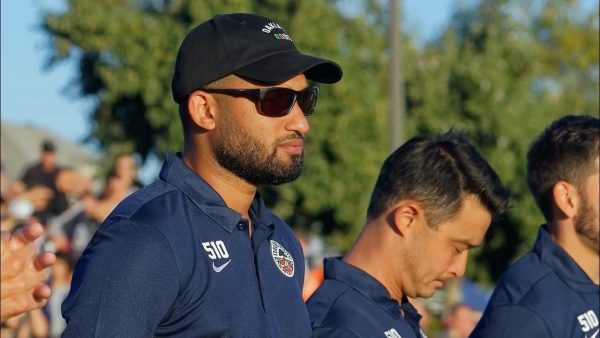World Cup hopes come to an end for men

2015 redesigned Pioneer logo.
When 32-year old Landon Donovan was left off the 2014 World Cup men’s soccer team roster, many were in complete shock. Why would the team’s all-time best goal scorer watch the cup from home? But the US was making it known that they wanted to bring in some younger players to get them World Cup experience so in 2018 they were ready.
Fast forward to Oct. 10, 2017: what should have been a successful business trip to Trinidad and Tobago turned into a trap as the United States suffered possibly the most embarrassing loss in program history. The US needed nothing more than a draw to qualify for the 2018 World Cup in Russia, but instead suffered a 2-1 loss against an already eliminated team with a 1-8 record in the current qualifying round.
The US still had a chance to go to the intercontinental playoff, had Mexico or Costa Rico defeated Honduras or Panama, but they both lost on the night of October 10, which eliminated the US team.
The FIFA World Cup is the most prestigious soccer tournament in the world and for the first time since 1986 the United States will not compete in the tournament. The World Cup occurs every four years and starts with 209 FIFA teams competing to qualify for the 32 spots. In the North, Central America and Caribbean region qualifying matches began in March 2015. There are 35 teams competing in the region but only 3.5 will qualify.
How qualification works in North, Central America and Caribbean: there are five rounds and one round of intercontinental playoff.
Round 1: March 2015
The 14 lowest-ranked Participating Member Associations (PMAs), PMA Rank 22 through to PMA Rank 35 (based on the FIFA/Coca-Cola World Ranking of August 2014), will contest Round One.
Round 2: June 2015
The seven Round One winners will then join the 13 PMAs ranked 9-21 in Round Two.
Round 3: August 2015- September 2015
The 10 Round Two winners will then join the 2 PMAs ranked seventh and eighth in Round Three.
Round 4: November 2015- September 2016
The six teams qualifying from Round Three will then join the 6 PMAs ranked one to six in Round Four.
Round 5: November 2016- October 2017
The six teams qualifying from Round Four will take part in Round Five.
The fourth placed team advances to the intercontinental play-off.
The top three placed teams will qualify for the 2018 FIFA World Cup Russia™.
Play-Off: November 2017
The two teams will be paired into one home-and-away series.
The two PMAs participating in the CONCACAF-Asian Zone play-off will meet each other home and away.
The winner will qualify for the 2018 FIFA World Cup Russia™.
One major hiccup during the qualifying rounds was the firing of head coach Jurgen Klinsmann last November. After suffering a 2-1 loss to Mexico at home and a 4-0 loss to Costa Rica, the US Soccer Federation made the executive decision to let Klinsmann go.
“While we remain confident that we have quality players to help us advance to Russia 2018, the form and growth of the team up to this point left us convinced that we need to go in a different direction,” said US Soccer President Sunil Gulati.
Ideally you would want to go through an entire qualification process with the same coaching staff so the players and coaches can build around each other. The Klinsmann lead team dug themselves into a hole, but they were not out yet. With less than a year left in the qualifying rounds, bringing in someone new is far from ideal, but coach Bruce Arena has experience leading the national team from 1998-2006.
According to American Soccer Now, another contributing factor to the lack of success on the men’s team is a four-year gap of players born in years 1990-1994 and another off year in 1996. Players born in these years should currently be in their prime, but that is not the case. The major contributors to the team are entering their 30s and many players coming off the bench are in their very early 20s and some are still in their teens.
Perhaps the Men’s program needs to take lessons from the Women’s program that boasts three World Cups and Four Olympic Gold Medals making them the most successful international women’s soccer team. Currently ranked number one in the world, the women’s team looks to return to the World Cup again in 2019 to try to win their 4th.
Soccer has never had the attention of the American people like the other major sports, but there is absolutely no excuse that the richest nation in the world with a population of 330- million should not be able to be competitive with the other top nations. Disappointment is the only way to describe this past World Cup cycle, but hopefully the USMNT uses their absence from Russia as motivation to re-evaluate and develop a strong team for Qatar in 2022.








